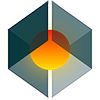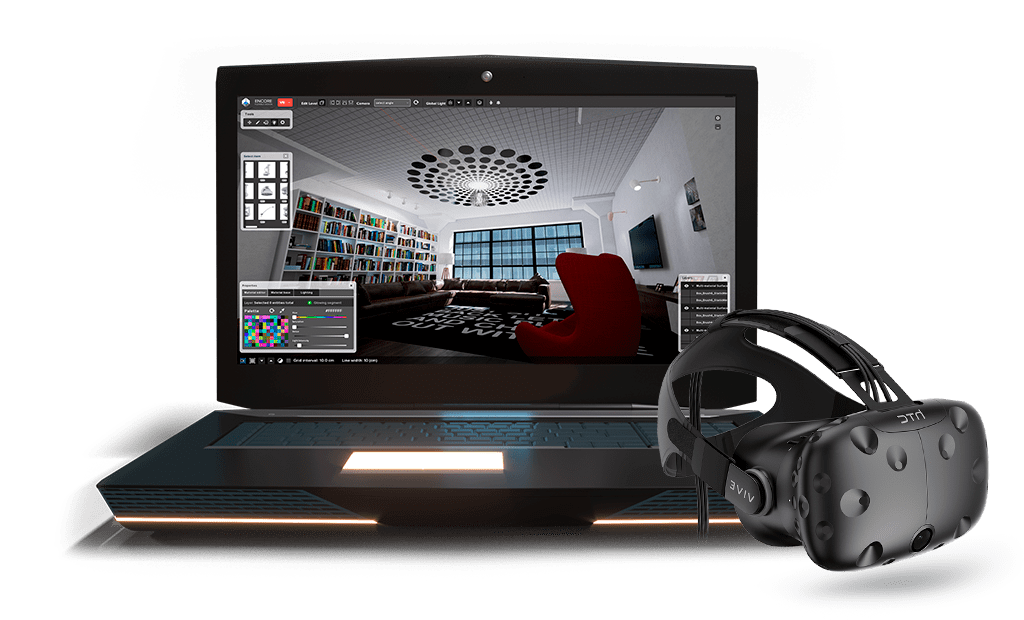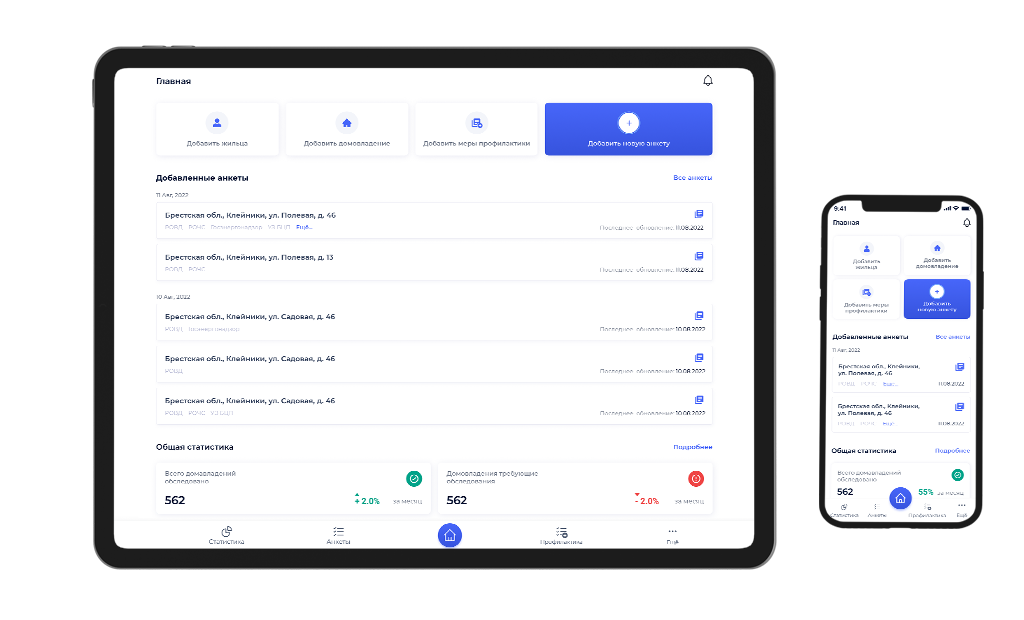VR\AR\MR application
AR technology (augmented reality)
Augmented reality
— one of the many technologies for human-computer interaction. Its specificity lies in the fact that it programmatically combines visually two initially independent spaces: the world of real objects around us and the virtual world recreated on a computer.
A new virtual environment is formed by overlaying programmed virtual objects on top of the video signal from the camera, and becomes interactive through the use of special markers.
Augmented reality has been used for many years in medicine, in the advertising industry, in military technology, in games, for monitoring objects and in mobile devices.
The basis of augmented reality technology is an optical tracking system. This means that the camera becomes the «eyes» of the system, and the markers become the «hands». The camera recognizes markers in the real world, “transfers” them to a virtual environment, superimposes one layer of reality on another, and thus creates an augmented reality world.
There are three main directions in the development of this technology:
-
«Markerless» AR technology
«Markerless» technology works on special recognition algorithms, where a virtual «grid» is superimposed on the surrounding landscape captured by the camera. On this grid, software algorithms find some reference points, by which they determine the exact place to which the virtual model will be “attached”. The advantage of this technology is that real-world objects serve as markers in their own right, and there is no need to create special visual identifiers for them.
-
AR technology based on markers
The technology based on special markers, or labels, is convenient in that they are easier to recognize by the camera and give it a more rigid reference to the place for the virtual model. This technology is much more reliable than the “markerless” one and works almost without failures.
-
«Spatial» technology
In addition to marker and markerless, there is an augmented reality technology based on the spatial location of an object. It uses data from GPS / GLONASS, gyroscope and compass built into the mobile phone. The place of a virtual object is determined by coordinates in space. Activation of the augmented reality program occurs when the coordinates set in the program coincide with the coordinates of the user.
Virtual reality technology
Virtual reality (VR) is an artificial world that does not exist in nature, in which a person can completely “immerse himself” not only as an observer, but also as a participant. Virtual reality systems are technical devices and software that create for a person the illusion of being in this artificial world and, in some cases, allow manipulating its objects.
Most of all virtual reality systems have (or should have) the following main characteristics:
-
Simulation in real time
The virtual reality system should provide the user with a picture, sound, as well as a complex of tactile and other sensations (if any) in response to the actions taken, instantly, without noticeable delays.
-
Realistic simulation of the user’s environment
To completely immerse the user in the world of virtual reality, the system must display virtual objects with a high degree of realism, so that they look “like alive”
-
Support for one or more users
Virtual reality systems are distinguished by the number of simultaneously working users and are divided into individual and collective. As a rule, individual systems are created on the basis of display devices that can only be operated by one person (helmets, goggles, etc.). Systems for collective work are created on the basis of display facilities available to several users at once. An example is a stereoscopic video projector that forms a three-dimensional image on a large one.
-
A VR system should provide a stereoscopic image that provides a sense of depth in space
A person has binocular vision, that is, he perceives the world with both eyes at once. At the same time, the images observed by each eye are slightly different from each other and individually do not have three-dimensionality, but our brain adds two pictures into a single three-dimensional image. Modern technologies for generating pseudo-volumetric images are based precisely on this effect, and so-called stereoscopic pairs of images have been created that provide the illusion of volume.
-
Interactivity — the ability to interact with the virtual world
In the «virtual universe» the user must be an exclusively active observer. He must be able to interact with the virtual environment, and it in turn will be based on user actions. This will allow the user to look around and move in any direction within the virtual environment.
Технология смешанной реальности MR (mixed reality)
Mixed reality (MR) is also called hybrid and is a model of the worldview in which the real and virtual worlds are combined. This model is also called mixed reality or MR for short, which reflects the main distinguishing feature: the real and virtual worlds are mixed, they cannot be clearly distinguished.
What is the difference between mixed reality and virtual and augmented reality?
Often terms and abbreviations, such as MR, VR, AR, are confused with each other and used as synonyms, although in fact there are a number of characteristic features by which different «types» of reality can be easily distinguished from each other:
- The real world is an objective reality, not supplemented by artificial technologies
- Virtual reality, VR is a subjective, fake world created using screens, holograms and other artificial means.
- Augmented reality, AR is a digitized real world with hints, holograms, and other objects superimposed on top of it. This is a virtual world that is built on the basis of the real one and obeys it in everything.
- Finally, mixed reality applications differ from AR in that in them virtual objects are able to influence the real world, and not just obey it.
With the help of MR, it is possible to conduct training based on simulation, military training without increased risks. Also, the development of applications in this area is aimed at creating an interactive environment with the full inclusion of virtual objects in reality, using such objects for commercial, developmental, and entertainment purposes.
What is included in the service?
The VR/AR development industry is actively developing, so now everyone has the opportunity to order their own virtual reality for specific purposes. What is included in the Enter VR development service? This is a complex and capacious process consisting of several stages. The successful implementation of the project requires the coordinated work of an experienced development team in tandem with the customer. It is necessary to clearly present the ultimate goal and, on its basis, draw up a detailed terms of reference. Our specialists are able to turn any idea into a unique VR/AR content. They will take into account all the wishes for the project and create a virtual world worked out to the smallest detail or augmented reality
Stages of work
- Filling out the brief by the client or uploading the existing TOR — the customer fills out a questionnaire that will determine the main parameters of the future project, or submits his own version of the terms of reference for consideration.
- Consultation and preliminary calculation of the cost — after reviewing the brief / TOR, a consultation is held with the client. The manager will clarify the questions on the project, tell you in detail about what is included in the service and make a preliminary calculation of the development cost.
- Development of terms of reference, choice of device and technology — based on the information received from the client, a detailed terms of reference is drawn up, which determines what is included in the virtual reality development service, the rights and obligations of the parties, the technologies and equipment used, as well as the procedure for performing work.
- Development of a design document, plan, project — our specialists (designers, artists and programmers) make up a special guide, according to which the entire project will be implemented in the future.
- Development and testing — the company employs a staff of highly qualified employees, each of which performs a role in the development (from writing a script to 3D modeling). We carefully test all elements of the project on the equipment chosen by the client.
- Project launch — we release the finished product and provide further support.




